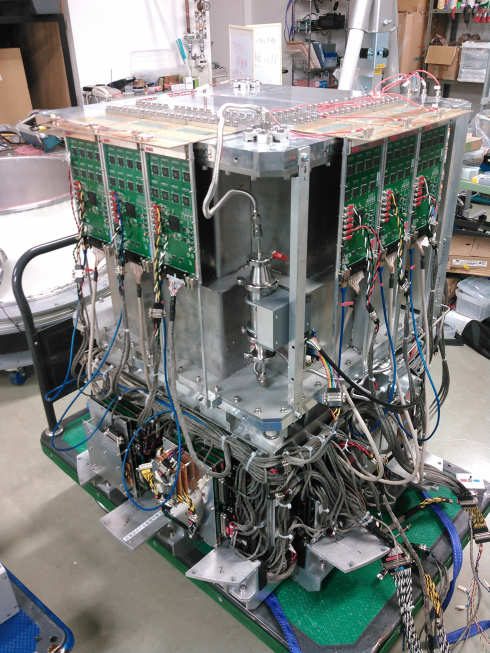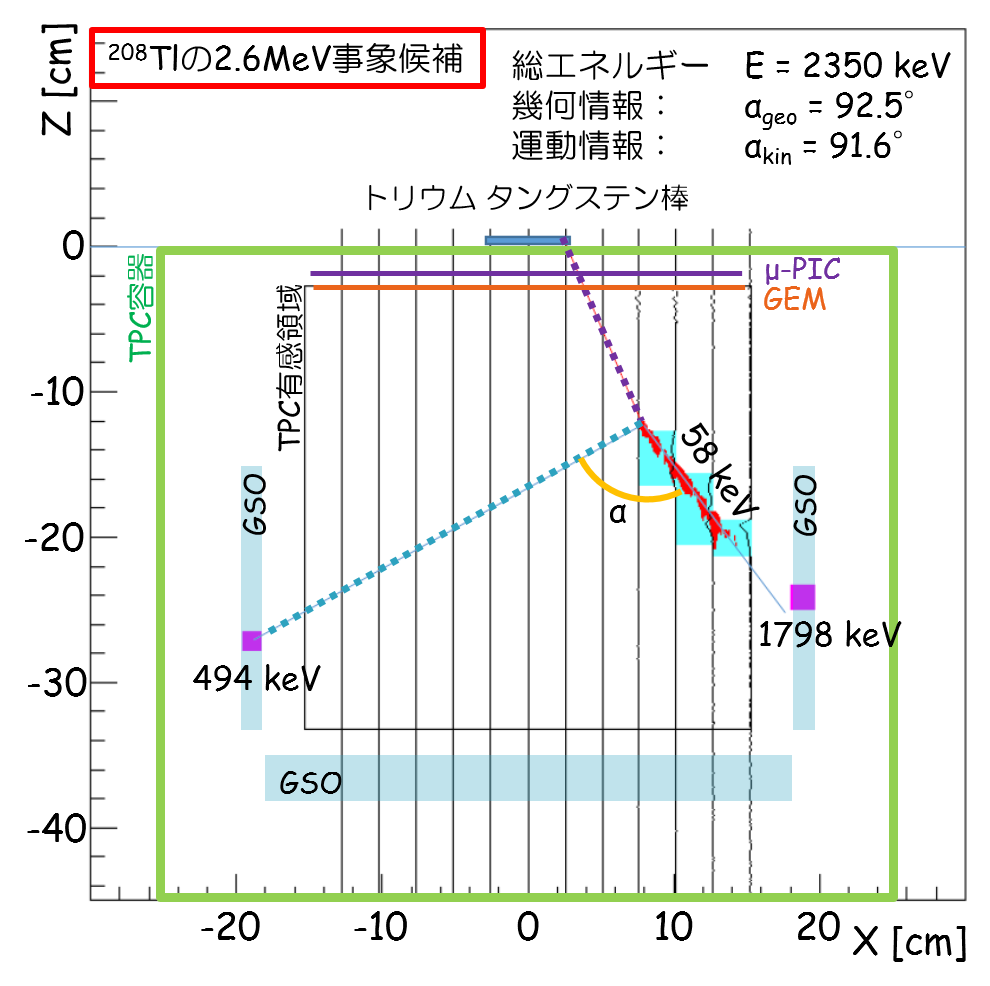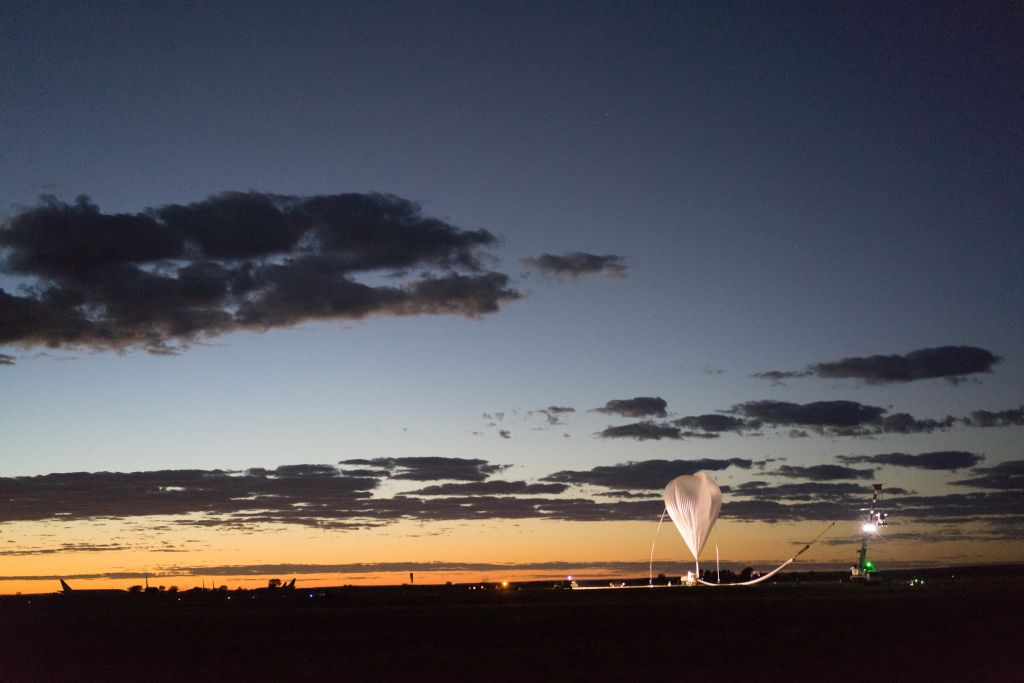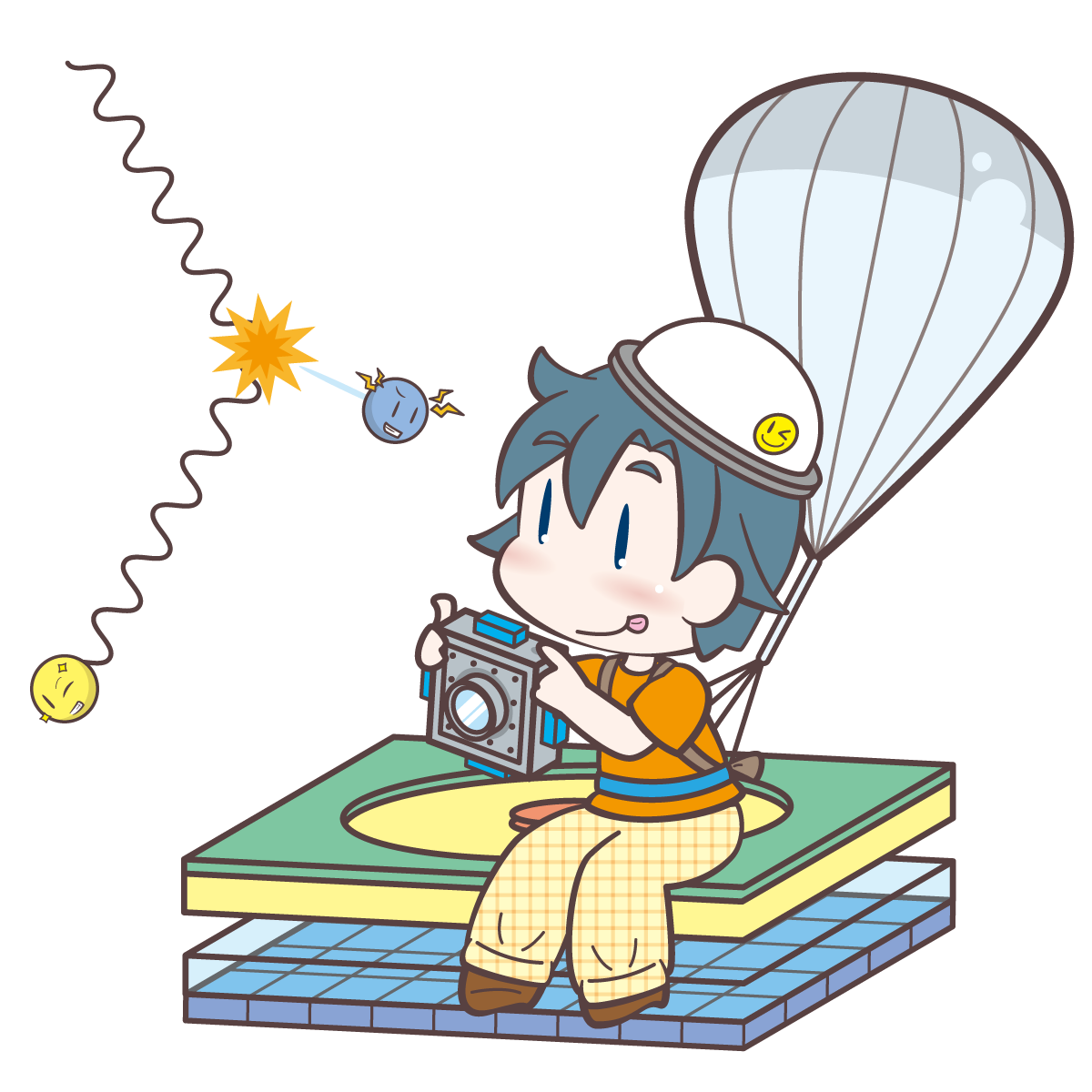SMILE-2+
 By the knowledge based on the experiments utilizing the SMILE-II ETCC,
By the knowledge based on the experiments utilizing the SMILE-II ETCC,
we developed a new ETCC having a new structure
for realizing a larger effective area and a more wide detection energy band.
For the verification that an ETCC suits for a survey of new gamma-ray sources,
we submitted a balloon experiment of the observations of Crab nebula
and the electron-positron annihilation line from the galactic center region using an updated ETCC.
Our submission was adopted as one of the balloon experiments supplied with ISAS/JAXA at Australia, on 2018.
This balloon experiment (SMILE-2+) was launched from Alice Springs, Australia, on the morning of April 7, 2018.
SMILE-2+ experiment and flight

 The SMILE-2+ ETCC consisted a gaseous electron tracker, which had a volume of 30x30x30 cm3 filled by an argon based gas with the pressure of 2 atm,
The SMILE-2+ ETCC consisted a gaseous electron tracker, which had a volume of 30x30x30 cm3 filled by an argon based gas with the pressure of 2 atm,
and the surrounding GSO pixel scintillator arrays.
The difference from the conventional ETCC was that the GSO pixel scintillator arrays were placed in the vessel of the gaseous electron tracker.
This new structure does not only made the large detection efficiency of the Compton-scattered gamma-rays,
but also supplied the detection capability for the high-energy electrons having the energy above 0.3 MeV.
Therefore, SMILE-2+ ETCC realized a large effective area for the energy range of 0.3-1.5 MeV.
SMILE-2+ ETCC was launched from Alice Springs, Australia, on April 7, 2018.
After the level flight lasted for ~26 hours, the instrument was recovered perfectly.
Now, we are analyzing the obtained onboard data.


